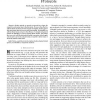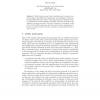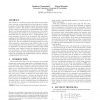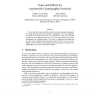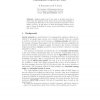CSFW
1997
IEEE
14 years 11 months ago
1997
IEEE
Abstract— Replay attacks on security protocols have been discussed for quite some time in the literature. However, the efforts to address these attacks have been largely incomple...
LICS
1999
IEEE
14 years 11 months ago
1999
IEEE
Security protocols use cryptography to set up private communication channels on an insecure network. Many protocols contain flaws, and because security goals are seldom specified ...
CSFW
1999
IEEE
14 years 11 months ago
1999
IEEE
The combination of two security protocols, a simple shared-key communication protocol and the Di e-Hellman key distribution protocol, is modeled formally and proved correct. The m...
CRYPTO
2000
Springer
14 years 11 months ago
2000
Springer
Abstract. While there is a great deal of sophistication in modern cryptology, simple (and simplistic) explanations of cryptography remain useful and perhaps necessary. Many of the ...
LOPSTR
2001
Springer
14 years 11 months ago
2001
Springer
In this paper we define a sequent calculus to formally specify, simulate, debug and verify security protocols. In our sequents we distinguish between the current knowledge of prin...
CCS
2001
ACM
14 years 11 months ago
2001
ACM
The events of a security protocol and their causal dependency can play an important role in the analysis of security properties. This insight underlies both strand spaces and the ...
CSFW
2002
IEEE
14 years 12 months ago
2002
IEEE
We present the first type and effect system for proving authenticity properties of security protocols based on asymmetric cryptography. The most significant new features of our ...
FSTTCS
2003
Springer
15 years 3 days ago
2003
Springer
Tagging schemes have been used in security protocols to ensure that the analysis of such protocols can work with messages of bounded length. When the set of nonces is bounded, this...
ESORICS
2003
Springer
15 years 3 days ago
2003
Springer
We introduce the on-the-fly model-checker OFMC, a tool that combines two methods for analyzing security protocols. The first is the use of lazy data-types as a simple way of buil...
CCS
2003
ACM
15 years 3 days ago
2003
ACM
This paper continues the program initiated in [5], towards a derivation system for security protocols. The general idea is that complex protocols can be formally derived, starting...
